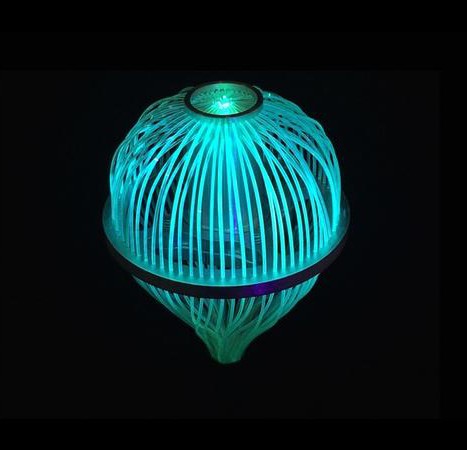Facebook Plans to Beam Internet to Backwaters with Lasers
Engineers from Facebook’s Connectivity Lab have published details of a new optical technology to help laser beams deliver fast Internet access to remote areas.
Lasers are an attractive way to send data over significant distances. Not only can they hold a lot of information and propagate a long way, they also don’t require dedicated spectrum like cellular networks, which means they can be used to set up ad hoc data links to off-grid locations. And because they use line-of-sight light transmission, more than one can be used in the same area without interference.
In order to achieve high data rates, though, the detectors used to catch the light signals have to be small. Problem is, as a beam of light propagates through space, it becomes wider—in fact, orders of magnitude wider than the detector itself. While it’s possible to focus the light back down using optics, it’s complex and expensive. Instead, engineers from the Connectivity Lab have developed a system that neatly gets around the problem.

Writing in the journal Optica, the engineers describe how they’ve used fluorescent materials, instead of traditional optics, to collect light from data-carrying laser beams. A series of plastic optical fibers, doped with organic dye molecules that absorb blue light and re-emit it as green light, are shaped into an almost-sphere. When a laser signal hits the fibers, they emit green light within two nanoseconds. The light travels down the length of the fibers and is ultimately directed toward a small—and fast—photodetector.
So far the system can be used to receive signals carrying data at rates of up to 2.1 gigabits per second, though the team claims it could go faster if it were built to absorb infrared, rather than blue, light.
It’s worth pointing out that this isn’t the first piece of hardware to emerge from the Connectivity Lab. Famously, it’s been working on a solar-powered drone to deliver Internet access. That particular project is progressing slowly, though, so despite the fact that the team behind the new laser device plans to test it in a real-world setting, there’s likely still much development ahead before it’s used widely.
The social network is, however, busy pursuing plenty of other projects to take data to the sticks. Most notably, its Telecom Infra Project will use open-source cellular networks to achieve similar results. That way, you see, anyone will be able to sign up on Facebook.
(Read more: Optica, “Facebook Has a Plan to Take Cellular Data to the Sticks,” “Facebook Enters the Race to Build 5G Networks,” “Meet Facebook’s Stratospheric Internet Drone”)
Keep Reading
Most Popular
Large language models can do jaw-dropping things. But nobody knows exactly why.
And that's a problem. Figuring it out is one of the biggest scientific puzzles of our time and a crucial step towards controlling more powerful future models.
How scientists traced a mysterious covid case back to six toilets
When wastewater surveillance turns into a hunt for a single infected individual, the ethics get tricky.
The problem with plug-in hybrids? Their drivers.
Plug-in hybrids are often sold as a transition to EVs, but new data from Europe shows we’re still underestimating the emissions they produce.
Stay connected
Get the latest updates from
MIT Technology Review
Discover special offers, top stories, upcoming events, and more.